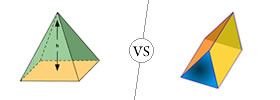Difference between Hill and Mountain
Key Difference: There is also no universal definition between the two. A lot of countries differentiate using the height, with any land form that exceeds 2,000 feet is considered a mountain and below 2,000 feet is considered as hill.
 The Earth’s surface is covered with many different terrains, with some higher than the others and with different characteristics. What are these different landforms? Earth has multiple landforms such as mounds, hills, mountains, volcanos, valleys and many more. The first four have one thing that is common – it is higher than the land surrounding it. So, what is the difference between hills and mountains?
The Earth’s surface is covered with many different terrains, with some higher than the others and with different characteristics. What are these different landforms? Earth has multiple landforms such as mounds, hills, mountains, volcanos, valleys and many more. The first four have one thing that is common – it is higher than the land surrounding it. So, what is the difference between hills and mountains?
Many experts claim that height is one of the most important thing that differentiates the two. However, according to the U.S. Geological Survey, there is actually no official difference between the two. There is also no universal definition between the two. A lot of countries differentiate using the height, with any landform that exceeds 2,000 feet is considered a mountain and below 2,000 feet is considered as hill.
There are other smaller differences between the two as well, such as formation, elevation, civilization, etc. Hills are most commonly formed by erosion of the land by glaciers and water. Glaciers that melted resulted in eroding of the land or depositing sediment from one place to another until it formed a mound with the nearby areas being relatively lower compared to the elevated piece of land. However, mountains were not formed in this manner. Mountains are a creation of the shifting of tectonic plates and volcanism.
 Mountains are higher in terms of elevation and have relatively colder climates compared to hills. The higher elevation also results in different plants and animals that reside on the higher areas of the mountains. Hills usually have the animals and plants that are found in the surrounding areas of that particular hill. Hills can be man-made, but those are referred to as mounds, while mountains are made by natural phenomena.
Mountains are higher in terms of elevation and have relatively colder climates compared to hills. The higher elevation also results in different plants and animals that reside on the higher areas of the mountains. Hills usually have the animals and plants that are found in the surrounding areas of that particular hill. Hills can be man-made, but those are referred to as mounds, while mountains are made by natural phenomena.
Lastly, hills usually do and can have civilizations that are built on the hill’s summit. These are usually to provide them with a good view of invaders. Ancient Rome was built on the city’s seven hills to provide it with better protection. Mountains cannot sustain civilizations at the higher peaks because of its steepness and also because of the elevated temperatures and lack of oxygen.
Hills can be climbed as a hiking venture, but mountains can only be climbed by the adventurous that seek to reach greater heights of a mountain.
Comparison between Hill and Mountain:
|
|
Hill |
Mountain |
|
Definition |
A landform that is elevated compared to the surrounding land. It has a distinct visible summit. |
A large landform usually extends over 2,000 feet above sea level and usually has a peak. |
|
Formation |
Can be formed from faulting, erosion and movement and deposition of sediment by ice glaciers |
Formed through shifting of tectonic plates or volcanism |
|
Elevation |
Usually below 2,000 feet or 600 meters |
Usually above 2,000 feet or 600 meters |
|
Steepness |
Is less steep compared to the mountains |
Is steeper compared to hills |
|
Man made |
Can be man made |
Cannot be made by man |
|
Civilization |
Is used for civilizations for settlement, allows a better view of the surrounding area. Also, beneficial in terms of protection from intruders |
Cannot be used for civilization because of its elevated height and cold climates |
|
Climate |
Reflects the climate of the area where the hill is |
Higher elevation results in less heat being trapped near the peaks. This causes the temperature to be cold. |
|
Plants |
Various plants grow on the hills depending on the area and the minerals in the soil |
Plants are scarce and are limited to the ones that grow only in cold climates such as Pines |
|
Animals |
Animals that are found in surrounding areas of the hills can be found on the hills |
The colder temperature allows for animals such as bears, mountain cats, cougars, foxes, etc. |
|
Highest |
Cavanal Hill in Oklohoma, US at 1,999 feet |
Mount Everest located at the border of Nepal and China at 23,622 feet |
Image Courtesy: friendsoftheochils.org.uk, veracity-mag.com









Comments
Robert
Fri, 03/23/2018 - 20:20
Ashish
Wed, 10/04/2017 - 18:57
Happy student
Wed, 03/07/2018 - 14:56
Hi Ashish, you are right! The error has been fixed. Thank you for pointing it out.
dbadmin
Thu, 10/05/2017 - 16:25
best technical ...
Wed, 06/21/2017 - 14:13
Add new comment